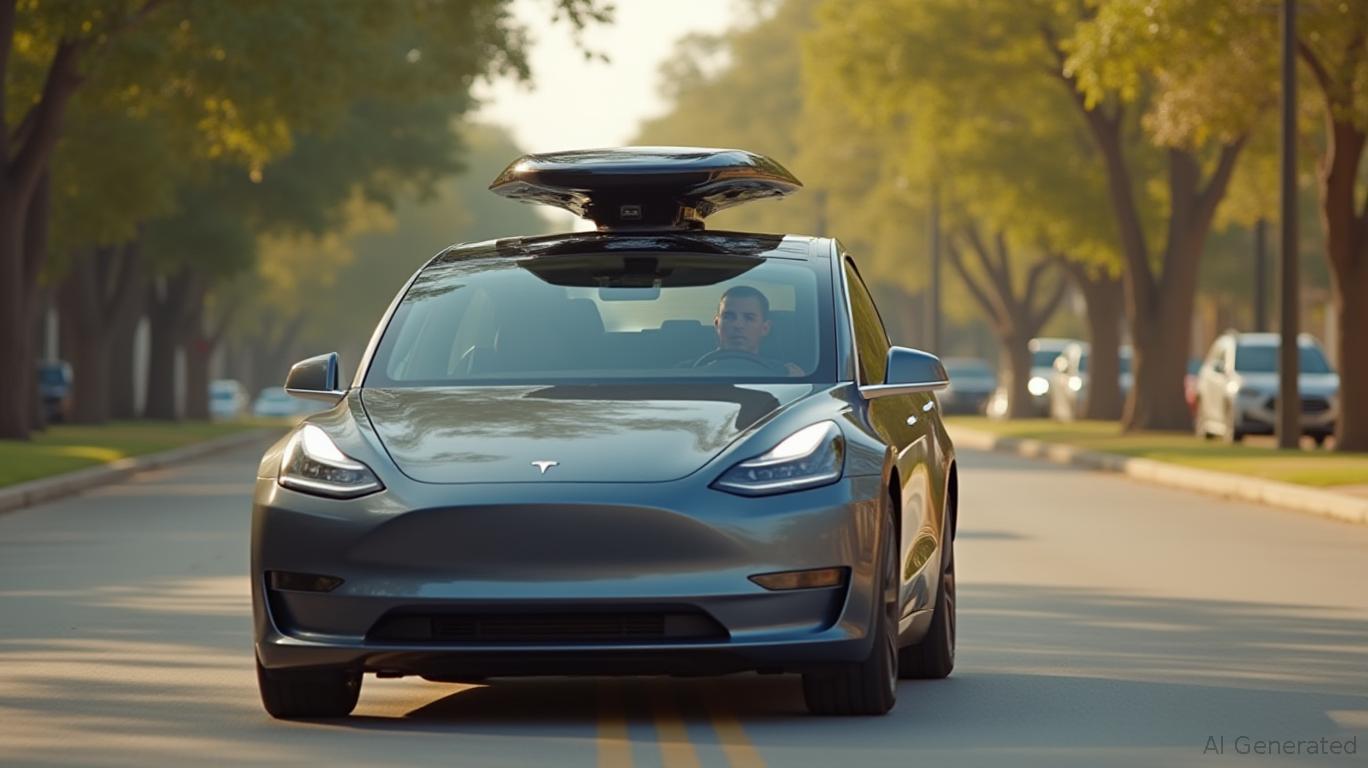Tesla's Robotaxi Gamble: Can Autonomous Ambition Justify Its Sky-High Valuation?
Harrison BrooksMonday, Jun 23, 2025 11:37 am ET
On June 22, 2025,

### The Trial's Scope: A Small Step, But a Milestone
Tesla's initial rollout involved just 10–20 Model Y vehicles operating within a geofenced area of Austin, accompanied by human “safety monitors” to intervene in emergencies. The flat $4.20 ride price and restricted hours (6 AM–midnight) underscored the trial's experimental nature. Musk has vowed to expand to 1,000 vehicles within months and 25 cities by 2026, but scaling this vision faces formidable hurdles.
First among these is regulatory uncertainty. Texas's new law, effective September 1, 2025, mandates permits, emergency protocols, and safety oversight—a framework Tesla is rushing to meet. While the state's permissive stance contrasts with stricter rules in California or New York, federal guidelines from NHTSA and the U.S. Department of Transportation remain evolving. A misstep in safety could trigger permit revocations or delayed approvals, stifling growth.
### Technical Challenges: Camera-Only vs. Lidar
Tesla's “Full Self-Driving Unsupervised” system relies solely on cameras—a stark contrast to rivals like Waymo and Cruise, which use lidar and radar for 3D environmental mapping. While Musk dismisses lidar as “expensive and unnecessary,” skeptics argue that camera systems struggle with low-light conditions, glare, and unpredictable obstacles.
Waymo, for instance, operates a fleet of 1,500+ vehicles with lidar-equipped Jaguars and Hyundais, serving five U.S. cities and logging millions of autonomous miles. Cruise, meanwhile, focuses on dense urban environments with its Chevrolet Bolts and custom Origin pods. Tesla's camera-only approach may offer cost advantages but risks reliability gaps in complex scenarios—a flaw investors must weigh against its $460 billion market cap.
### Competitor Benchmarks: A Crowded Road Ahead
Waymo's lead in both fleet size and deployment breadth (e.g., airport access in Phoenix and San Francisco) highlights Tesla's uphill climb. By 2026, Waymo aims to reach 3,500 vehicles, while Tesla's 1,000-vehicle target—still hypothetical—depends on flawless execution. Even if achieved, 1,000 cars pale against Waymo's scale.
### The Valuation Rubicon: Is 149x P/E Justified?
Tesla's valuation assumes flawless execution of its autonomous vision, but the path is littered with risks:
1. Safety Scrutiny: Every accident involving Tesla's Robotaxis—particularly in its camera-dependent system—could spark regulatory backlash.
2. Cost Pressures: Expanding to 1,000 vehicles requires massive capital expenditure, even if the Model Y is cheaper than competitors' fleets.
3. Consumer Adoption: Will riders trust a camera-only system in bad weather or chaotic urban traffic?
Investors are pricing in a rosy scenario where Tesla's software superiority and vertical integration (from vehicles to charging to autonomy) dominate the market. Yet, the stock's 149x forward P/E—a premium even compared to Waymo's parent Alphabet (25x)—demands near-perfect execution.
### Investment Implications: Buy the Dip, or Avoid the Bubble?
The Robotaxi launch is a milestone, but it is just the first step. Until Tesla demonstrates:
- Scalability: Expanding to 1,000 cars without safety incidents.
- Regulatory Compliance: Navigating Texas's new laws and federal standards.
- Technical Superiority: Proving its camera-only system matches lidar in reliability.
...the stock's current valuation remains precarious. For bulls, Tesla's entry into autonomous ride-hailing opens a $100 billion market opportunity. For bears, the risks of overextension—technical, financial, and regulatory—are existential.
### Conclusion: A Wait-and-See Stance
Tesla's Robotaxi trial is a bold move, but it is far from a guarantee of autonomous dominance. The stock's rally reflects hope, not proof. Investors should treat the dip following the initial surge as a buying opportunity only for those willing to bet on Musk's vision overcoming execution risks. For others, Tesla's 149x P/E demands a “wait-and-see” approach until the company delivers on its 2026 milestones—or risks a reckoning with reality.
In the words of a Texas regulator: “Autonomous vehicles are here, but the road to scale is still under construction.” Investors would do well to heed that warning.
Disclaimer: The news articles available on this platform are generated in whole or in part by artificial intelligence and may not have been reviewed or fact checked by human editors. While we make reasonable efforts to ensure the quality and accuracy of the content, we make no representations or warranties, express or implied, as to the truthfulness, reliability, completeness, or timeliness of any information provided. It is your sole responsibility to independently verify any facts, statements, or claims prior to acting upon them. Ainvest Fintech Inc expressly disclaims all liability for any loss, damage, or harm arising from the use of or reliance on AI-generated content, including but not limited to direct, indirect, incidental, or consequential damages.

Comments
No comments yet